France, to execute a trick shot using the "schuftan process", to integrate
the ring set, into a painting of the Albert Hall.

British VFX Matte
painting Timeline.
The information above has been compile from different sources, magazines and books, and with the help of Martin Body, John Grant, Bob Cuff and Doug Ferris to whom I'm sincerely thankful.
|
1916. Walter Hall, the English art director of D. W. Griffith's "Intolerance", develops his own method of creating the glass shot. He paints the additions to the scene on composition board, cuts them out with a beveled edge, and mounts them in front of the camera. He patented this variation of the glass shot technique, known as "The Hall Process" in 1921. |
|
1922. Walter Percy ("Pop") Day introduces the "The Hall Process or galss shot" to the French film industry on “Les Opprimés.” |
| 1927. For Alfred Hitchcock
film "The ring" Walter Percy Day is called from
France, to execute a trick shot using the "schuftan process", to integrate the ring set, into a painting of the Albert Hall. |
 |
|
1930. Percy Day develops his version of the latent image technique and applies it in “Au Bonheur des Dames" . and "Les jouer de chess" |
 |
|
1934. Returning to England, Percy Day to demonstrate the value of glass shots executed some paintings free at some British Studios. Studios producers encourage their own Studios painter to made matte paintings. Although Percy day and His assistant Peter Ellenshaw are the only two credited matte painters at that time, there where some others unknown |
| 1934. Percy Day and his assistant
and stepson Peter Ellenshaw paint
mattes for producer Alexander Korda. " The scarlet pimpernel" |
|
1935. Director Alfred Hitchcock has illustrator Fortunino Matania create a matte painting for the trap sequence at the Royal Albert Hall in “The Man Who Knew Too Much.” Albert Whitlock worked as scenic artist at Gainsborough Studios. |
 |
| 1936. Walter Percy Day headed
the Department of Matte Painting
at Denham Studios. Percy Day and assistant Peter Ellenshaw paint mattes for “Things to Come”. |
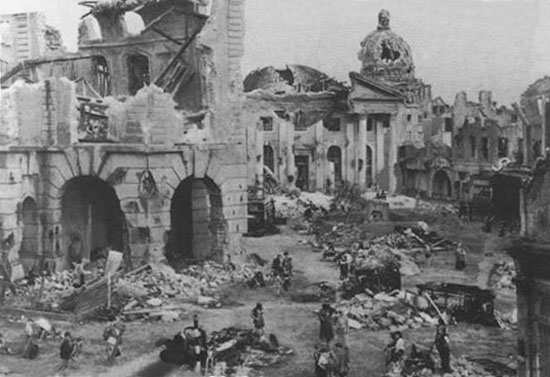 |
| 1936. For Alfred Hitchcock
film "Sabotage", the Strand Street of London
was recreated into a Studio, with the help of a glass painting. |
 |
| 1937. For the film "Young
and innocent" made at gaingsborough studios,
they used miniatures and matte painting. Albert Whitlock worked on scenic and miniatures and probably Albert Jullion as matte painter. |
 |
|
1940. Percy Day and assistant Peter Ellenshaw paint a fantasy . world for “The Thief of Bagdad” The film wins the Academy Award for Visual Effects. |
 |
|
1945. Percy Day paints glass shots for "Henry V". . |
 |
| 1946. After many years as
scenic artist and background painting,
Albert Jullion get his first credit as matte painter for "The magic Bow" |
 |
| 1946. Another scenic artist,
Les Bowie begun as matte painter
at Pinewood Studios, he paints mattes for David Lean´s “Great Expectations”. |
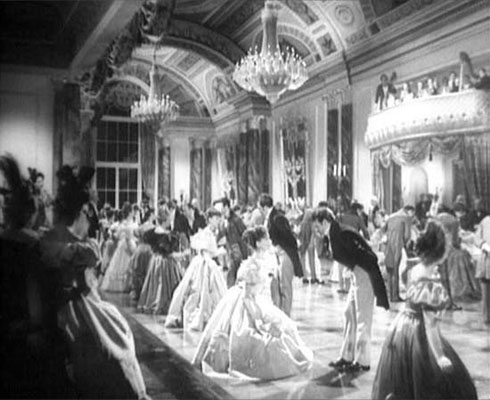 |
| 1946. A young Cliff Culley entered
Pinewood studios as apprentice at the
Special effects department under Bill Warrington. |
| 1946. Walter Percy
Day was appointed Director of Special Effects
of London Films at Shepperton Studios. After returning from five years in the RAF, Peter Ellenshaw paints mattes for “A Matter of Life and Death”. Percy Day heads the visual effects for the film |
 |
| 1947. Percy Day and Ellenshaw
paint Himalayan views and the
monastery for “Black Narcissus”. |
 |
| 1948. Les Bowie, Joseph
Natanson, and Ivor Beddoes paint mattes for
the ballet dream sequence in “The Red Shoes”. |
 |
| 1948. Les Bowie paint mattes for “Oliver Twist” at Pinewood Studios. |  |
| 1948 . Joseph Natanson started to work at Shepperton matte department |
| 1948 . Peter Ellenshaw was called
to Tom Howard at British MGM Studios
to make matte paintigs for "Idol of Paris". |
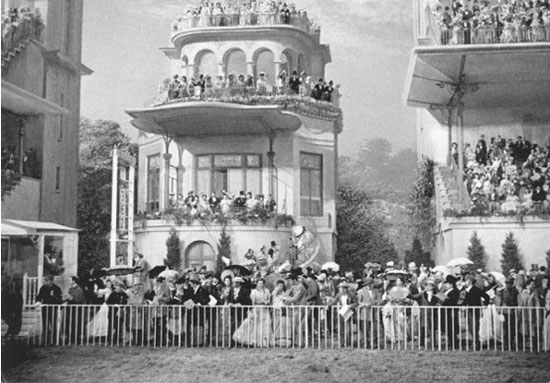 |
| 1949. Albert Whitlock paints
his first original negative matte
painting for “The Bad Lord Byron”. |
| 1949 . Hitchcock film "Under
capricorne" was made at British MGM Studios
Matte paintings probably by Albert Jullion, who was art director at "Idol of Paris". |
 |
| 1950 Peter Ellenshaw works
on his first Disney Studio film in England,
painting mattes for “Treasure Island.” |
 |
| 1950. Albert Whitlock is
credited with Bill Warrington as Special effects
for his matte paintings at "Trio" made for at Pinewood. |
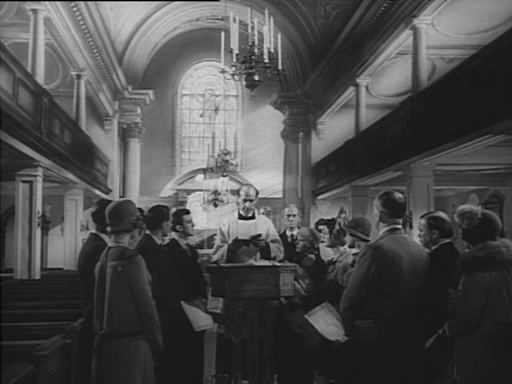 |
| 1952. Tom Howard head
of Special effects department of British MGM
ask Peter Ellenshaw to paint mattes for "Quo Vadis? " |
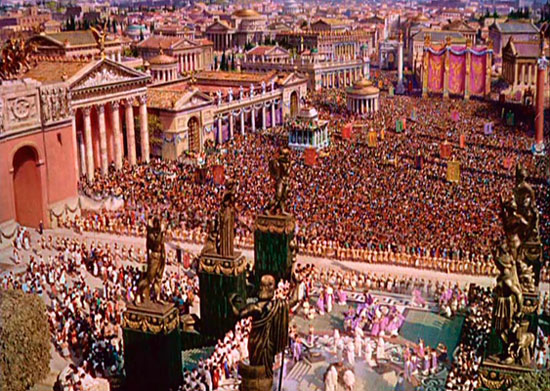 |
| 1951 Les Bowie left Pinewood
matte department to create his own company in
association with Vic Margutti, Bowie-Margutti films. |
| 1952. Roy Field still in
his teens, entered at Bowie Films, and learned
with Margutti as FX Cameramen |
|
1952. Percy Day retired from Shepperton Studios Wally Veevers became head of Matte Department at Shepperton Shepperton Studios crew: George Samuels principal painter and constructor. Albert Jullion a brilliant painter, much loved by Vincent Korda. Bob Cuff hired as trainee Matte painter by Vincent Korda. Joseph Natanson Judy Jordan: left about 1954 Ivor Beddoes: Freelance Alan Maley: went to Hollywood, Disney at 1964 |
| 1952 Peter Ellenshaw
work for Disney, with Albert Whitlock as assistant,
for “Rob Roy, the Highland Rogue”, and “The Sword and the Rose”(image) |
 |
| 1952. At British MGM Tom
Howard supervised VFX work for films like
"Ivanhoe"(image) or "The rounded table Knights". Matte paintings were uncredited |
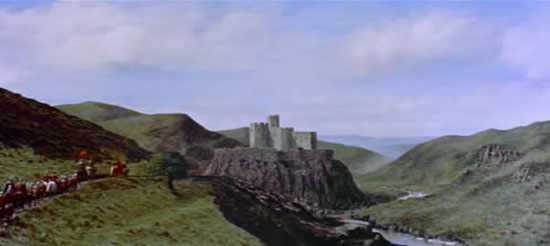 |
| 1953 .Joseph Natanson worked frequently
at Rome for films like
"Puccini" , "Madame Butterfly" |
|
1954 Peter Ellenshaw went to America to work at Disney matte department for "20. 000 Leagues Under the Sea" Albert Whitlock moved also to USA to work under Ellenshaw. |
 |
| 1954. Ivor Beddoes painted mattes for "Atila" filmed in Italy. . |  |
| 1954. Judy Jordan left Shepperton
matte departement to work at MGM British
Studio under Tom Howard. |
| 1956. Joseph Natanson already settled
at Rome, painted mattes for
.
Louis Lichtenfield at " Helen of Troy", filmed at Cinecitta. |
 |
| 1956. Vic Margutti and Roy Field left Bowie films to go to Pinewood |
| 1957. Matte artist Bob Bell who
had previously worked at Pinewood
Studios, left to AP films as art director. |
| 1957. Derek Meddings worked with
Les Bowie as matte assist
at Anglo-Scottish Pictures Ltd. They painted mattes for Hammer films like "Dracula" (image) and "The curse of Frankenstein" |
 |
| 1958 . Tom Howard at British
MGM wins an academy for the FX
at "Tom Thumb" with matte paintings probably by Judy Jordan. |
 |
| 1959. Bill Warrington left
Pinewood Studios to work freelance.
Cliff Culley remains as head of matte painting and optical effects for films like "Northwest frontier" |
 |
| 1960 . Derek Meddings left Bowie
and went to Gerry Anderson
TV series as Director of Special Effects. |
| 1961-. The Shepperton studios matte
department was responsible
for the mattes from some Ray Harryhausen films like “The mysterious island” and “Jason and the Argonauts”.(image) Wally Veevers was in charge of the photographic dept and Ted Samuels in charge of practicals on the floor. Peter Harman was his cameraman with Bryan Loftus, Geoff Stevenson, and John Grant who comes from kodak. John Mackie with Bob Cuff was about to leave to join Les Bowie . The main matte artist was Doug Ferris with Gerald Larn, Brian Evans and Peter Melrose assisting. Films from this period at Shepperton included "Vampire Killers", "Best House in Town", "Casino Royal", and many more, not all had matte paintings as they also did transitions, Split Screens and titles. Shepperton matte department was housed in M stage which had a large matte painting studio employing several matte painters, a model shop, a small shooting stage and optical rooms. The walls displayed many matte paintings and models from earlier films, sadly most lost today. |
 |
| 1963. Cliff Culley head of matte
department at Pinewood, with
Roy Filed supervising optical effects. Begun his James Bond series, painting mattes for "From Russia with love" At middle sixties, Charles Stoneham joins Pinewood matte department, trained by Cliff Culley. |
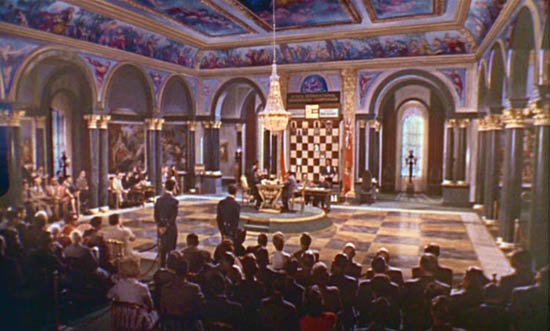 |
| 1963. Bob Cuff begun working with
Les Bowie.
Ray Caple was already working as Les Bowie’s matte artist and had been trained by him from an early age. They share matte work for films like "The first men in the moon" . or "The masque of the red death" (picture) |
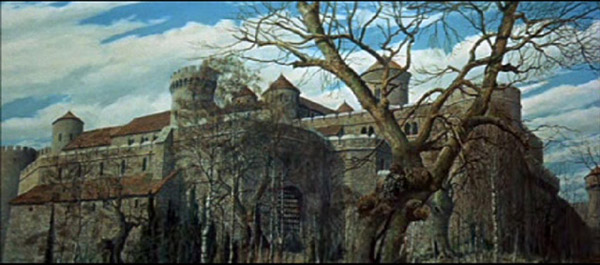 |
| 1963. "Cleopatra" earned the Academy
Award for Special effects with Emile Kosa
as matte painter supervisor and Joseph Natanson matte assistant, in Cinecitta, Italy. |
 |
| 1964. After his well-regarded work
in “Doctor Strangelove”,
Alan Maley joins Disney Studio in America as a matte painter. . |
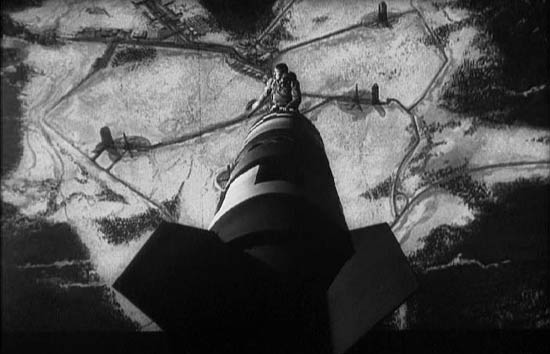 |
| 1964. Ivor Beddoes
working as freelance, painted mattes for
.
Bill Warrington at "The long ships" |
 |
| 1966. Peter Melrose and Bob
Cuff paint mattes for Hammer film
.
“Dracula has risen from the Grave” |
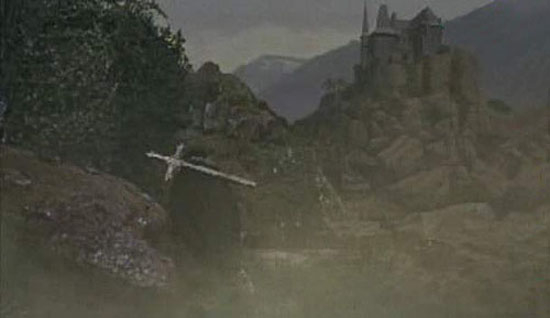 |
| 1967 John Mackey, Les Bowie and
Bob Cuff formed a company
(Abacus Productions) to make T.V. commercials. (Les Bowie did not want to be involved with commercials and acted as sleeping partner, renting his premises and equipment to the offshoot company). - Wally Veevers leaves Shepperton to workk on "2001" along with Brian Loftus - Doug Ferris, Gerald Larn, Peter Harman and John Grant remain at Shepperton Working on films like "Dance of the Vampires" |
 |
| 1968- Abacus were invited by Carl
Foreman and his designer Geoffrey Drake
to carry out painted mattes and other work for “McKenna’s Gold”. John Mackey went with. The painting was shared between Ray Caple, Lynette Lee, Bob Cuff and Joy Seddon, who joined Abacus as a matte artist, having previously been working with Stanley Kubric on 2001. They also did various model shots and some pickups, employing a fair number of technicians, including Brian Loftus, John Johnson and others. Bob´s son Paul Cuff worked as Matte Process cameraman and married Joy Seddon, now Joy Cuff. |
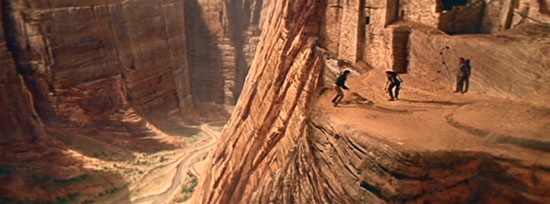 |
| 1968. At Pinewood studios
Cliff Culley and Roy Field were responsibles for
the matte paintings at "Chity Chity Bang Bang" |
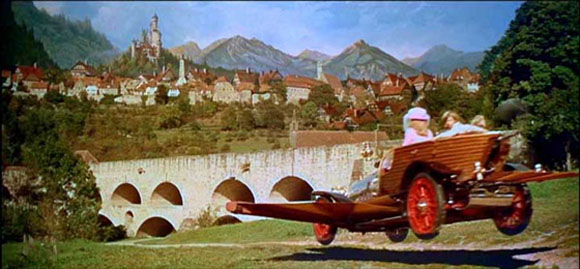 |
| 1968 . Douglas Adamson was employed
as matte painter at MGM British Studios.
He painted mattes for "Where eagles dare" |
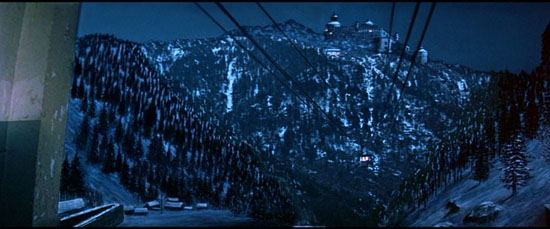 |
| 1969. Anne of
the Thousand Days.Shepperton matte department with
Doug Ferris, Gerald Larn and Bryan Evans painting and John Grant and Peter Harman as matte photography. Gerald Larn painted the night view of the Tower of London matte. |
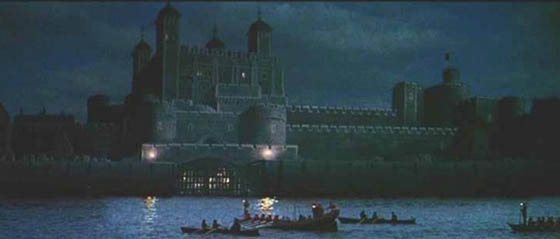 |
| 1969 . Ray Harryhausen film
"Valley of Gwangi" went to Shepperton
matte department, with Doug Ferris and Gerald Larn painting and John Grant and Peter Harman as matte photography. Gerald Larn painted some rock formations for the Lost Valley. . |
 |
|
1969 . Ray Caple was responsible for mattes at “The battle of Britain”. . Martin Body assisted Caple as matte camera. |
 |
|
1971. Roy Field went freelance in 1971, as Vic Margutti had retired |
| 1971. Gerald Larn at Shepperton
matte department paint mattes for
Roman Polanski "Macbeth" |
 |
| 1973- After 11 years at Shepperton
matte department, Gerald Larn
left his film work when the Studios closed. |
| 1974 - Wally Veevers sets up at
Bray Studios.
Doug Ferris & Peter Harman join him. |
| 1975. Cliff Culley left
Pinewood, and create his own company
Westbury Design and Optical. He provide matte effects for . "The pink panther strikes again" |
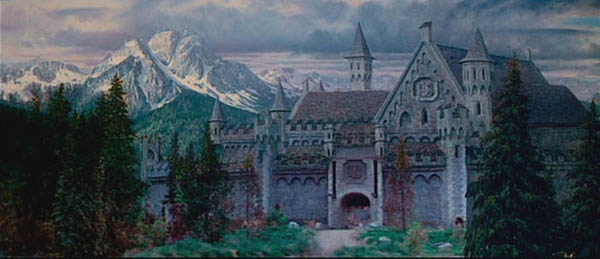 |
| 1976. Shepperton reopens
and Wally Veevers hires new premises
just across from M stage. Doug Ferris and Peter Harman join him. They work at "The prince and the pauper" |
 |
| 1978. Matte painter and composite
supervisor Les Bowie, and
matte painters Doug Ferris, Ray Caple, assisted by Liz Lettman, create the matte paintings for "Superman". Bowie is awarded with a posthumous Oscar the following year. He shared the award with Roy Field, Derek Medings, Colin Chilvers, Dennys Coop, and Zoran Perisic |
 |
| 1978. Cliff Culley
hired Leig Took as matte painter assistant
for "Warlord of Atlantis" and other films. |
|
1979 . Ivor Beddoes joined Doug Ferris and cameramen Peter Hammond and Peter Harman to create the mattes of "Superman II", made for Roy Field´s "Optical Film Effects" compamy |
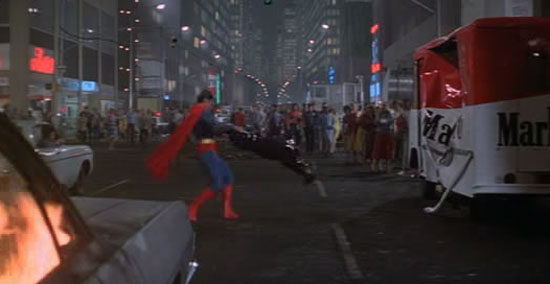 |
| 1979. Ray Caple paint mattes for Ridley Scot´s "Alien" . |  |
| 1981. Alan Maley retired from movies
after supervising the matte
department at I.L.M from "Dragonslayer" (1980) and "Raiders of the lost ark" (1981) |
|
1981. John Grant join Wally Veevers, Doug Ferris and Peter Harman, for "The Keep" with Roy Carnell and Stuart Galloway as camera assistants. |
| 1982 . Doug Ferris Peter
Harman, John Grant, and Martin Body join
Roy Field and Peter Watson at Optical Films effects in Pinewood, to work on projects in the early to mid eighties: 'Superman III', 'Santa Claus', 'Labyrinth' or "The last Days of Patton"(image) |
 |
| 1983. Leigh Took, after some
years learning with Cliff Culley,
went to work under Derek Meeding painting mattes for "Octopussy" |
| 1983. Derek Meddings Supervising
visual effects for "Supergirl"
.
painted a glass shot. |
 |
| 1984 .Cliff Culley provides
mattes and optical effects fo TV miniserie
"The last Days of Pompeii" with his company "Westbury design" |
 |
| 1984. Albert Whitlock retired as
head of Matte department at
Universal after painting mattes for "Greystoke: The Legend of Tarzan". He remains working as matte consultan for "Illusion arts" |
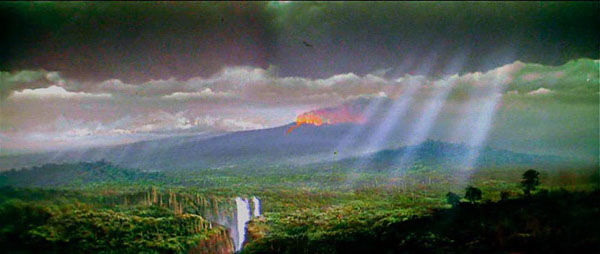 |
| 1984. For David Lean´s
"A passage to India" Doug Chian paint matttes
for Peerles Camera Company with Kent Houston supervising optical effects. The upper left part of the rock formations was painted. |
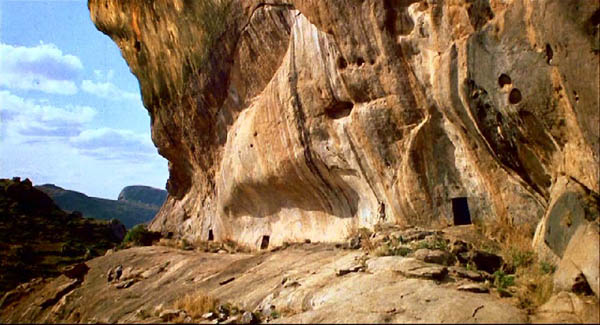 |
| 1985. Charles Stoneham became
disillusioned with the increasing
pressures of the industry, and retired to live in Cornwall, after his work at "Return to Oz" and "A Chistmas carrol" (image) |
 |
| 1985 . Ray Caple is responsible for the matte paintings at "Spies like us" | 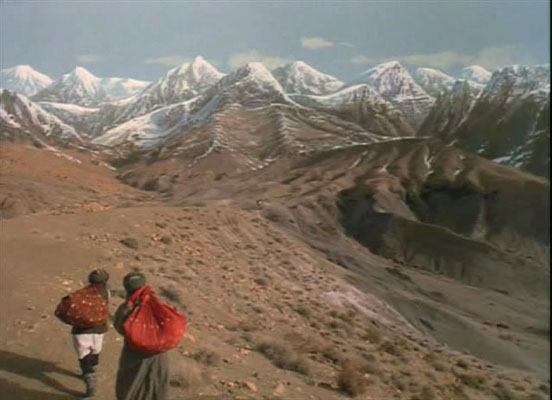 |
| 1986. Bob Cuff retired from commercials company Abacus. |
| 1986. Joseph Natanson retired
after his last painting work at
.
"The name of the rose" Since the early 60´s he lived and worked at Rome painting mattes for more than 80 films. |
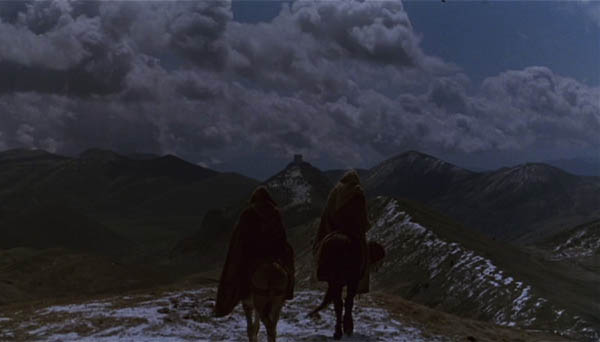 |
| 1988. After some years workingg
under Harrison Ellenshaw ,
British painter JP Trevor painted mattes for Derek Meedings at "Stealing Heaven" |
 |
| 1988. Bob and Joy Cuff with Doug
Ferris and Leigh Took paint
.
mattes for “Baron Munchausen”. John Grant and Martin Body worked as matte camera at Peerles camera |
| 1988 . Cliff Culley paint
mattes for "Hellraiser II" with his son Neil Culley
as matte fotography. |
 |
| 1989. After painting mattes for
"Eric the Viking" with Doug Ferris,
Bob and Joy Cuff retired from matte painting. |
 |
| 1989. For the film "Batman"
Ray Caple, Leigh Took and JP Trevor
paint mattes for Derek Meedings |
 |
| 1990. Peter Ellenshaw made
his last contribution to film industry
assisting his son Harrison painting the mattes for "Dick Tracy" . |
 |
| 1990. Steve Beggs, after
some years working on miniatures,
paints mattes for "Hardware" at Cliff Culleys company . Westbury design and opticals" |
 |
| 1990. John Grant joined
Magic Camera Company with Doug Ferris
to work on various projects. |
| 1990. Afther his work on "Treasure island" Ray Caple died from illness. | 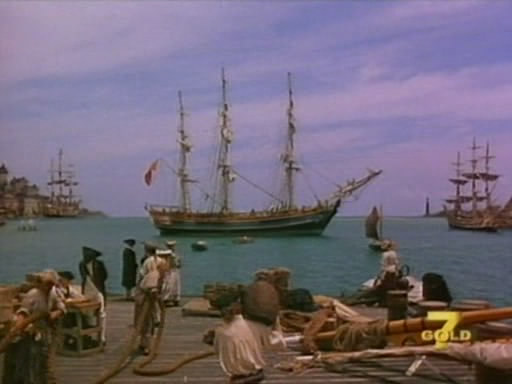 |
| 1991. Albert Whitlock painted his
last glass shot for
"The neverending story II" |
| 1993. Doug Ferris paint mattes
for Derek Meddings company
"Magic camera Company for films like "Princess caraboo" |
 |
| 1995 . Cliff Culley´s
company "Westbury desing" provided mattes and opticals
for the film "Restoration" |
 |
| 1997. Doug Ferris again for
Magic camera Company painted
the city of Calcuta for "City of Joy" |
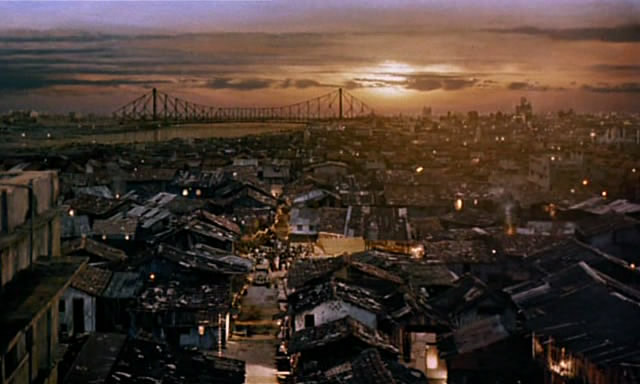 |
| 1997 . Cliff Culley painted
mattes for "Orphans" His son Neil Culley
was matte camera. Cliff Culley retired and his son Neil went into digital FX. |
 |
| 1997 . Doug Ferris painting, and
John Grant camera, made which could be the last
traditionanly hand done matte painting for "Seven Years in Tibet". Doug Ferris retired, John Grant continued to work and retrained on computers until the company relocated to central London and retired in 2002. |
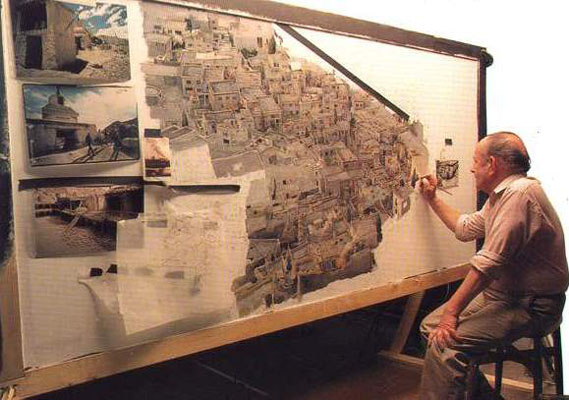 |